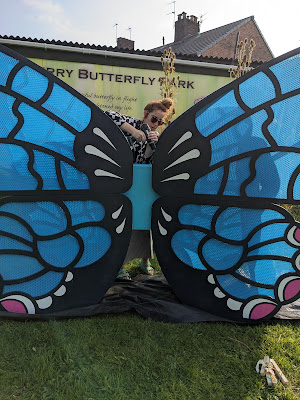Very many thanks to everyone who entered the spring/ summer quiz on the theme of amber listed birds. Your support is very much appreciated.
We received a total of 143 entries, of which 58 were all
correct. We had a random draw to select
the winner, who is Pam Kellett, of Birdwell, Barnsley. Congratulations Pam!
The answers to the clues are listed below, followed by some notes about the ones that seemed
to cause the most difficulty.
1. Baseball player after bivalve mollusc. (13). OYSTERCATCHER
2. Owns tangled string of little flags. (4, 7). SNOW BUNTING
3. Actor (“They don’t like it up ‘em!”) – only Clive knows the beginnings. (7). DUNNOCK
4. Late change in this clue. (4). TEAL
5. This one may be found in the Isle of Wight, I’m assured. Shanklin, Ventnor and Cowes are places to look apparently. (8). REDSHANK
6. Lab grew reeds to accommodate this one. (5, 7). SEDGE WARBLER
7. London borough put to good use, without German pronoun. (5, 5). BRENT GOOSE
8. I’m glad law has been changed. (7). GADWALL
9. Document from the pope with a little Swiss currency and a short distance. (9). BULLFINCH
10. With amazing luck, she’d find one of these! (8). SHELDUCK
11. Othello, perhaps, with an egg producer. (7). MOORHEN
12. Roughly push relative backwards. (8). SHOVELER
13. This one I hear would rhyme with 27. (4, 6). WOOD PIGEON
14. Among auks, the plumage of the Razorbill is darkest, relative to the other species. (7). KESTREL
15. Yellow Submarine, Mama Mia, or Blue Suede Shoes, say, with a fungal infection of the mouth! (4, 6). SONG THRUSH
16. Strange thing on pickle container. (8). NIGHTJAR
17. Stuart queen, surrounded by gin and tonic. (6). GANNET
18. It sounds as though this one is especially fond of the fruit of the vine. (4, 6). GREY PLOVER
19. www.3ls.ioer.bar – hack it! (6, 7). WILLOW WARBLER
20. Wood-smoothing tool for Heather. (10). SANDERLING
21. Strangely breeding until the Italian departed. (4, 7). REED BUNTING
22. Whose rare old tango danced for this one? (5-5, 3). SHORT-EARED OWL
23. Listen! Is that George Bush’s vice-president? (5). QUAIL
24. Twenty fl.oz. of French garlic. (7). PINTAIL
25. Let colour begin! (8). REDSTART
26. The parson at Robin’s funeral. (4). ROOK
27. One of the Big Six power companies, wearing judge’s headgear. (6). WIGEON
28. Smaller dupe that Cluedo victim bet on. (6, 5-6, 4). LESSER BLACK-BACKED GULL
29. You French, with the King’s fleet, begin seeing trouble over Northern Europe. (9). TURNSTONE
30. Who was prone to convulsions? (7, 4). WHOOPER SWAN
31. This one confused Ange Gray. (8). GARGANEY
32. Has this seabird come all the way from Corsica or Sicily, say? (13, 4). MEDITERRANEAN GULL
33. We absorb popular song – all time leaders follow thro’. (11). WHITETHROAT
34. This one sank its teeth into a seabird. (7). BITTERN
35. Sheffield Wednesday fan followed Devonshire river to New York. (5, 3). TAWNY OWL
36. Female member of the armed forces before 1993. (4). WREN
37. This one will wriggle at ya! (4, 7). GREY WAGTAIL
38. This one would be a rough or vicious bride according to Spooner. (5, 7). MARSH HARRIER
39. Just what is needed for eating houmous! (6). DIPPER
40. Pay Dick Fletcher, scramble, and lose kilo! (4, 10). PIED FLYCATCHER
41. “Come on, turn!” he shouted. (6, 4). COMMON TERN
42. Stephanie, 3rd in the 2023 Women’s PGA. Did she defeat someone on the last hole? (6, 5). MEADOW PIPIT
43. To identify this one, start with a voice one can easily tell. (6). AVOCET
44. Starting price for missile, and one who advocates an aggressive strategy. (11). SPARROWHAWK
45. A taste of liquor in Kent or Sussex. (5). SNIPE
46. Down on the bed, keeping you warm. (5). EIDER
47. Between lock and barrel, American plunged. (5, 4). STOCK DOVE
48. Tie up. (4). KNOT
49. Thermal energy in Sunderland’s river. (8). WHEATEAR
50. Liverpool footballer with number 11 or 15 of rugby union team. (7). REDWING
Notes
5. REDSHANK – Hidden in the sentences (- assuRED. SHANKlin,-).
9. BULLFINCH – A document from the pope is a “papal bull”.
10. SHELDUCK – an anagram, but a surprising number of people spelt it with two Ls. Oddly it was all the ducks that a lot of people spelt wrongly: 8 GADWALL, 12 SHOVELER, 24 PINTAIL, 27 WIGEON, and 31 GARGANEY.
13. WOOD PIGEON – Someone pointed out that in the published Amber List, this is just one word, Woodpigeon. We simply hadn’t noticed that! Fortunately it hasn’t caused anyone a problem – all entrants got this one right.
14. KESTREL – hidden in the sentence. The reference to auks and razorbills confused a number of entrants!
18. GREY PLOVER – (Grape lover!) Some people put Wine thrush. This is apparently a dialect name for the Redwing, but it is not well known. The judges didn’t allow it.
19. WILLOW WARBLER – an anagram of WWWLLLIOERBAR.
28. LESSER BLACK-BACKED GULL – there were a number of variations, none of which was accepted (Little and Great instead of Lesser; Black-headed instead of Black-backed.)
30. WHOOPER SWAN – some didn’t spot the anagram; others couldn't spell “Whooper” correctly.
32. MEDITERRANEAN GULL – perhaps not surprisingly, a lot of people struggled to spell this one.
33. WHITETHROAT – a lot of people put Nightingale, which doesn’t fit the clue and is a red-listed bird.
38. MARSH HARRIER – spoonerism is “harsh marryer”. We liked House Sparrow (“spouse harrow”), but this bird is red-listed.
41. COMMON TERN – just say it out loud!
43. AVOCET – initial letters of “A Voice One Can Easily Tell”.
50. REDWING – several people put Ruddock. That covers the Liverpool footballer, but Ruddock is another name for Robin, which is green-listed.


























.jpg)
.jpg)
.jpg)



.jpg)